The Historical Evolution of the Ruyi Pattern in 汉服
The Ruyi pattern, an auspicious symbol deeply rooted in Chinese culture, has adorned Hanfu, the traditional clothing of the Han Chinese, for centuries. Its origins can be traced back to ancient times, where it was believed to represent the Ruyi scepter, a ceremonial object symbolizing power and authority.
The Han Dynasty (206 BCE – 220 CE): Emergence of the Ruyi Pattern
During the Han dynasty, the Ruyi pattern began to appear on Hanfu as a decorative motif. It was often embroidered on the sleeves, hems, and collars of robes, adding an element of elegance and auspiciousness to the garments. As Buddhism spread throughout China, the Ruyi pattern became associated with the Buddhist symbol of the endless knot, representing the cycle of life and rebirth.
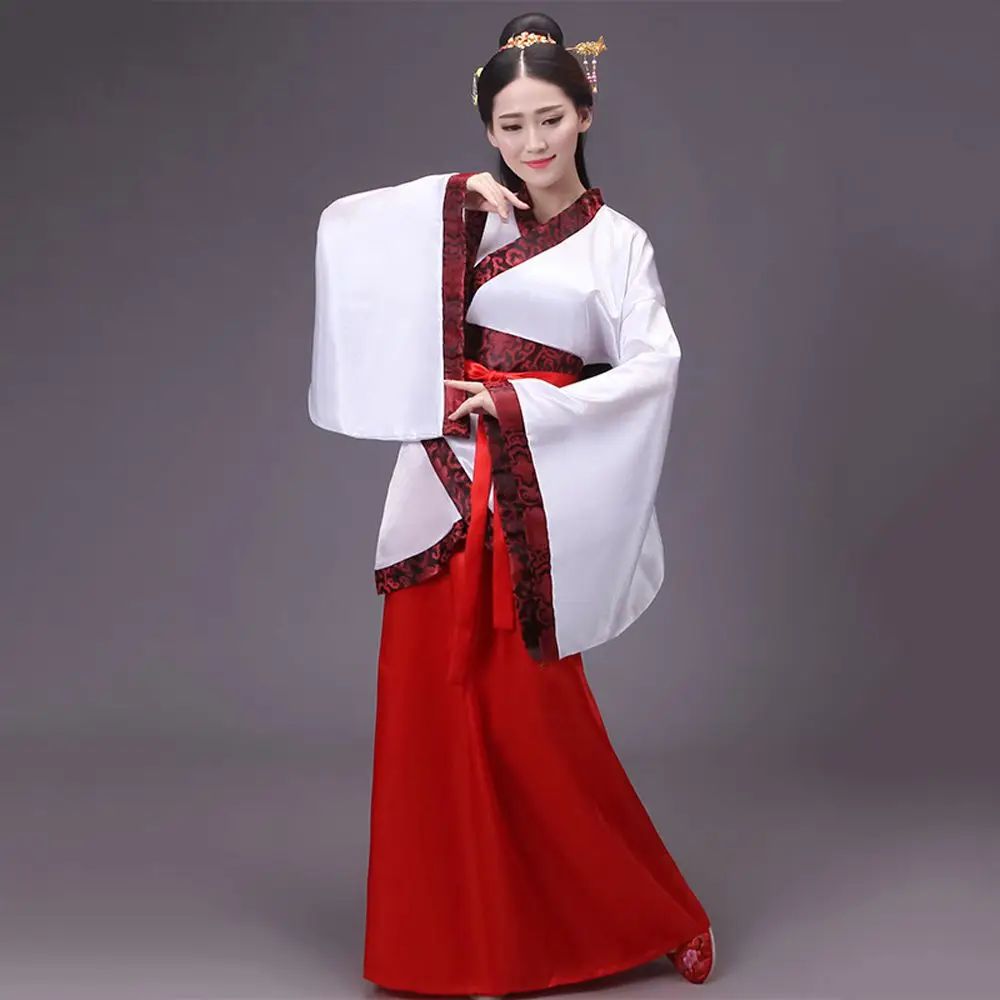
The Tang Dynasty (618 – 907 CE): Peak Popularity
In the Tang dynasty, the Ruyi pattern reached its peak of popularity. It was incorporated into the designs of both formal and informal Hanfu, becoming a ubiquitous symbol of prosperity and good fortune. The pattern was often combined with other auspicious motifs, such as clouds, dragons, and phoenixes, to create elaborate and visually stunning garments.
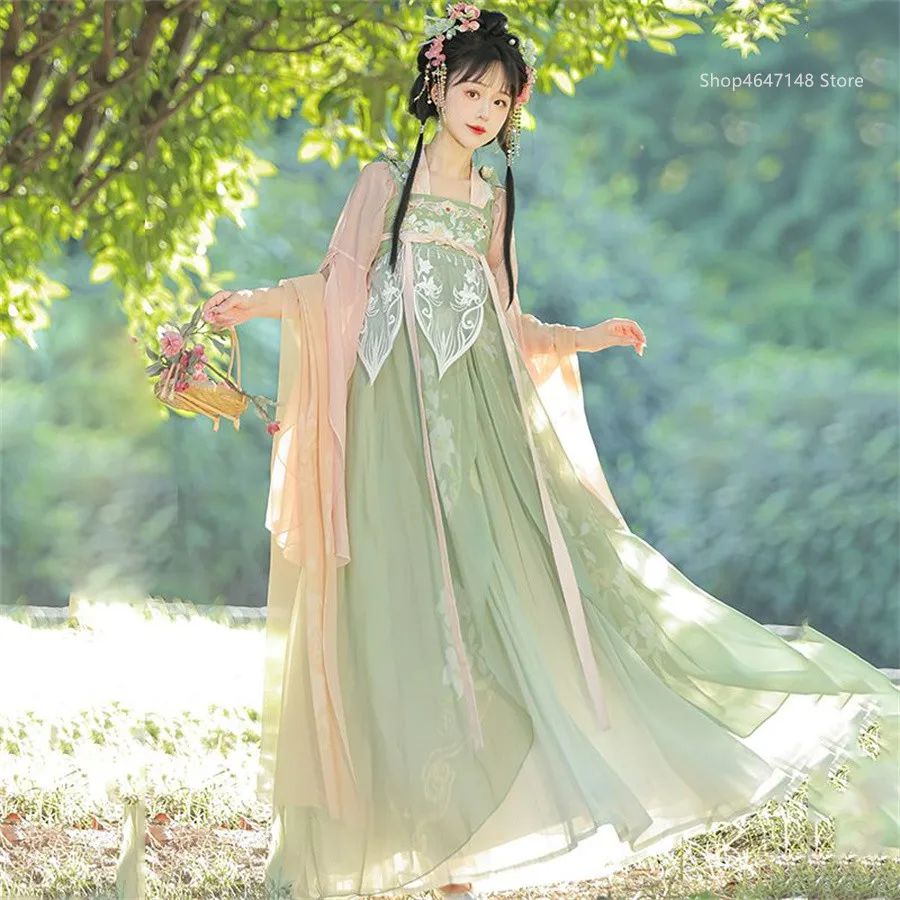
The Song Dynasty (960 – 1279 CE): Stylization and Intricacy
During the Song dynasty, the Ruyi pattern continued to be widely used on Hanfu. However, it underwent a slight transformation, becoming more stylized and intricate. The pattern was often rendered in a continuous line, creating a sense of movement and fluidity.
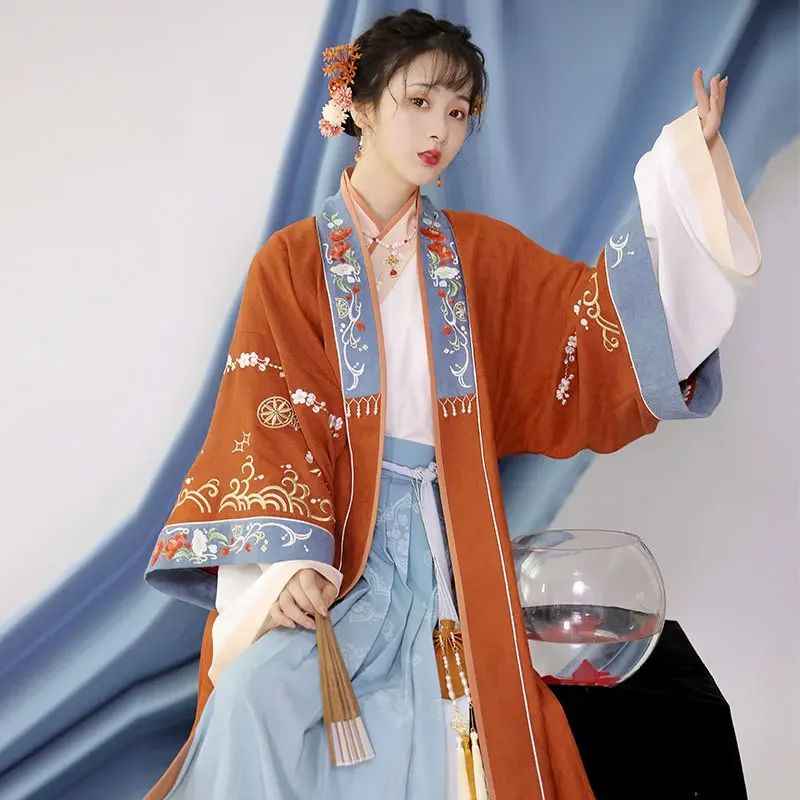
The Ming Dynasty (1368 – 1644 CE): Standardization and Formalization
In the Ming dynasty, the Ruyi pattern became more standardized and formalized. It was often used as a decorative border on the edges of Hanfu garments, adding a touch of refinement and elegance. The pattern also began to appear on other textiles, such as tapestries and curtains, further solidifying its status as an auspicious symbol.
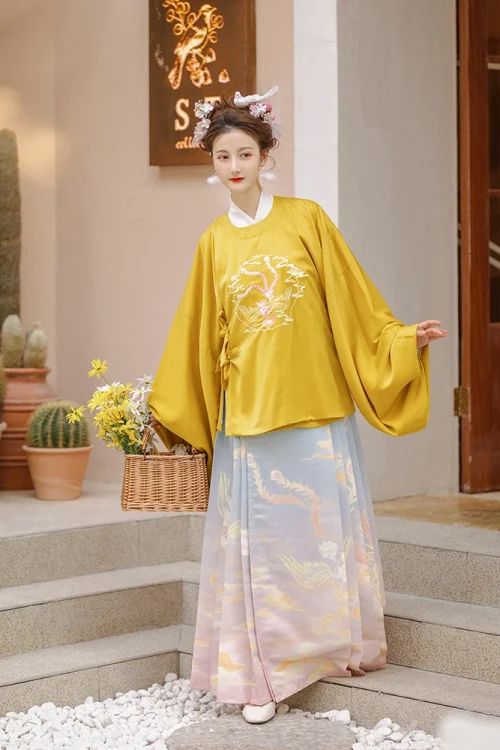
The Qing Dynasty (1644 – 1912 CE): Integration in Court and Everyday Hanfu
Throughout the Qing dynasty, the Ruyi pattern remained an integral part of Hanfu design. It was often incorporated into the elaborate embroidery and beadwork that adorned the robes of the imperial court. The pattern also became popular on everyday Hanfu, symbolizing the wearer’s hopes for good fortune and prosperity.
现代 Times: The Ruyi Pattern’s Enduring Legacy
In modern times, the Ruyi pattern continues to be used on Hanfu, both as a decorative motif and as a symbol of Chinese cultural heritage. It is often featured on the sleeves, hems, and collars of Hanfu garments, adding an element of auspiciousness and elegance to the attire. The Ruyi pattern has also been incorporated into other forms of Chinese art and design, such as ceramics, jewelry, and architecture, further solidifying its status as an enduring symbol of Chinese culture.
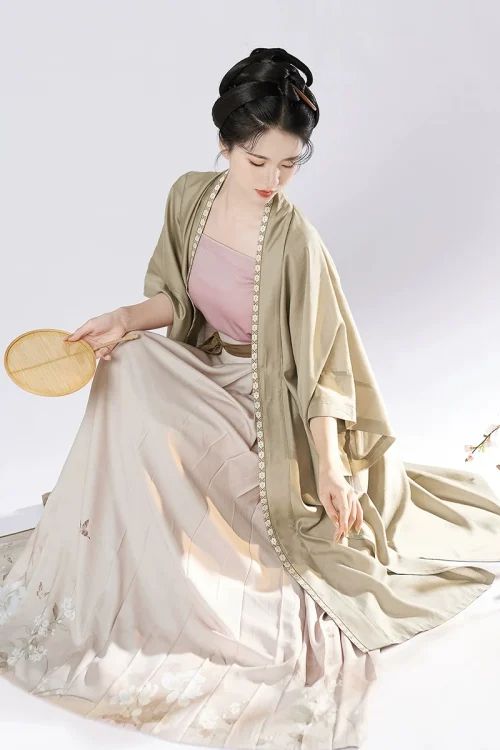
Symbolism and Cultural Significance of the Ruyi Pattern in Hanfu
The Ruyi pattern, an auspicious symbol deeply embedded in Chinese culture, holds a prominent place on Hanfu, the traditional clothing of the Han Chinese. Its origins can be traced back to ancient times, where it was believed to represent the shape of a cloud or a fungus.
The Han Dynasty: Initial Use and Symbolism
During the Han dynasty, the Ruyi pattern began to appear on Hanfu as a decorative motif. It was often embroidered or woven into the fabric, symbolizing good fortune, prosperity, and longevity. The pattern’s name, “Ruyi,” translates to “as you wish,” further emphasizing its association with the fulfillment of desires.
Tang and Song Dynasties: Elaboration and Cultural Integration
As Hanfu evolved over the centuries, the Ruyi pattern became increasingly elaborate and stylized. During the Tang dynasty, it was commonly used on the sleeves and hems of garments, adding a touch of elegance and auspiciousness. In the Song dynasty, the pattern became more intricate, incorporating elements such as clouds, bats, and mythical creatures.
The Ming Dynasty: Expansion Beyond Clothing
The Ruyi pattern’s popularity continued into the Ming dynasty, where it was often used on the collars and cuffs of official robes. It also became a common motif in architectural decorations, symbolizing the emperor’s power and authority.
The Protective and Cultural Value of the Ruyi Pattern
Beyond its decorative value, the Ruyi pattern also carried cultural significance. It was believed to ward off evil spirits and bring good luck to the wearer. As a result, it was often incorporated into children’s clothing and accessories, ensuring their well-being and protection.
The Ruyi Pattern in Modern Hanfu
In modern times, the Ruyi pattern remains an integral part of Hanfu. It is used on a wide range of garments, from formal robes to casual wear. Its enduring popularity is a testament to its timeless beauty and the cultural significance it holds for the Han Chinese people.
Today, the Ruyi pattern continues to be a symbol of good fortune, prosperity, and longevity. It is not only a decorative element but also a reminder of the rich cultural heritage of the Han Chinese people.
The Influence of the Ruyi Pattern on Hanfu Design and Aesthetics
The Ruyi pattern, an auspicious symbol of good fortune and prosperity, has played a significant role in shaping the design and aesthetics of Hanfu, the traditional clothing of the Han Chinese. Its origins can be traced back to ancient China, where it was believed to represent the shape of a cloud or a fungus.
Han Dynasty and Beyond: The Ruyi’s Continuous Influence
During the Han dynasty, the Ruyi pattern began to appear on Hanfu as a decorative motif. It was often embroidered or woven into the fabric, adorning robes, skirts, and accessories. The pattern’s popularity grew steadily over the centuries, becoming an integral part of Hanfu design.
Aesthetic and Symbolic Importance
The Ruyi pattern’s influence on Hanfu aesthetics is multifaceted. Its flowing, cloud-like shape adds a sense of elegance and grace to the garments. The pattern’s auspicious symbolism also enhances the overall aesthetic appeal of Hanfu, making it a desirable choice for special occasions and formal events.
Colors and Motifs in Ruyi-Inspired Hanfu
Furthermore, the Ruyi pattern has influenced the color palette of Hanfu. The traditional colors associated with the pattern are 红, 黄的, and 绿化, which are believed to bring good luck and prosperity. These colors are often used in combination with other auspicious motifs, such as dragons, phoenixes, and peonies, to create visually stunning and meaningful designs.
Legacy in Other Art Forms
In addition to its aesthetic value, the Ruyi pattern also holds cultural significance. It is often used in traditional Chinese architecture, furniture, and other decorative arts. The pattern’s presence on Hanfu serves as a reminder of the rich cultural heritage of the Han Chinese people.
Conclusion: Timeless Influence of the Ruyi Pattern
In conclusion, the Ruyi pattern has had a profound influence on the design and aesthetics of Hanfu. Its auspicious symbolism, flowing shape, and vibrant colors have made it an enduring and beloved motif in Chinese culture. The pattern continues to grace Hanfu garments today, embodying the beauty, elegance, and cultural significance of this traditional clothing.
Ruyi pattern is placed on the sleeves, collars and robes and of you are interested in traditional Chinese pattern on garments, you can click our website:https://cheongsam.net/product-category/hanfu/.
